URC is a snack company in Thailand. Several models from ATAGO's MASTER series are used for their qualit control of sucrose solutions. With hand-held refractometer, they provide high quality, tasty snacks to their customes.
Toiteevit Garden is a handmade jam and marmalade manufacturer in Thailand. In the process of making fresh fruits based products, MASTER-80H is used for measurement of sweetness. MASTER-80H measures jam and marmalade accurately from 60-70% brix.
NOVA ORGANICA manufactures hydrolyzed collagen for supplements and cosmetics.
To make sure the final products are the best quality, they measure protein solution with MASTER-80H.
MASTER-80H measures hot sample accurately and quickly from 30-60%.
With its ability to measure any hot samples, it helps them to conduct efficient quality assessment.
Grind House Knives manufacture handmade, high-end and practical knives.
With years of experiences, the owner Sam Jones creates uniquely designed knives with quality.
ATAGO's refractometer MASTER-M measures coolant concentration accurately around 10% and proudly contributes to his knife processing.
A soft yellow bean paste made by kneading green beans and egg yolk into a buttery dough. ATAGO's refractometer is playing an active role in the factory of the famous Setouchi confectionery "Poe'me", which is loved by various generations.
Poe'me Co., Ltd. is a confectionery maker that has been manufacturing and selling Japanese sweets in Matsuyama City, Ehime Prefecture since 1956. It was relocated to Toon City in the same prefecture in 2009, and in 2016, the Mother Keimu Sweets Park, where you can tour the factory, opened. The company name "Poe'me" and the fruit Daifuku and steamed bun "Shirasagisha" are also popular.
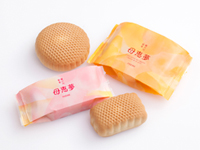
Popular "Mother Keimu" and
"Baby Mother Keimu"
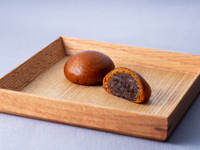
"Shirasagi Manju" using
brown sugar from Okinawa
In daily manufacturing, ATAGO's MASTER-80H has been a favorite for a long time to measure Brix of bean paste. Since the material is natural, the finished product may change even if it is made in the same way, and it seems that the quality of the final product is kept constant by measuring and managing Brix.
With strict quality control, you can make safe and delicious sweets.
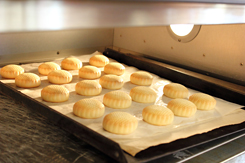
At the "Poe'me Sweets Park" located near the head office and factory, you can see and enjoy the freshly baked Poe'me. There are also occasional hands-on events where you can make "My Mother Keimu", which is very popular for sightseeing and making memories for your family! The event requires advance reservations, so be sure to check it out.
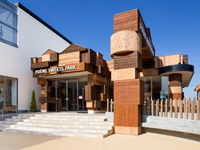
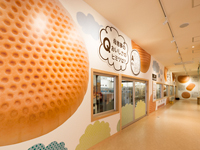
We want to make a lot of people "smile" ... Poe'me's sweets made with that in mind. Please enjoy it by all means.
Kikyoya Co., Ltd. is widely known for its Yamanashi souvenir "Kikyou Shingen Mochi". Founded around the beginning of the Meiji era, They continue to pursue taste from a new perspective while keeping traditions. Kikyo Shingen Mochi Factory Theme Park is one of the most popular factory tour facilities in eastern Japan.
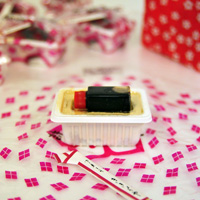
They are using handheld refractometer MASTER-53M and the old type N series in the quality control room. The N series is a model that has already been discontinued around 2006, but it has been used carefully for over 10 years.
The handheld refractometer is used to measure the syrup of Kikyo Shingen Mochi, and the mochi itself.
It is also used to identify lot-out products and investigate the cause.
It was managed by human taste before,but the quality become much more stable after starting quality control by refractometer.
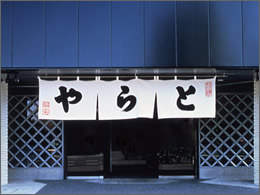
TORAYA Corporation
Known for their “yokan,” a red bean-based jellied dessert, Toraya has been a premier maker of traditional Japanese confectionery for over 480 years.
ATAGO hand-held refractometers have been used to check the sugar content of sweet bean paste called “an,” a critical ingredient for “wagashi,” traditional Japanese confections.
The manufacturing facility is surrounded by the bounty of nature and has a magnificent view of Mount Fuji. The pure and clean water from Mount Fuji is one of the quality ingredients for “wagashi.”
Mr. Tsuchiya, Production Manager, gave us a tour of the facility.
QWhat are manufacturerd at this facility?
AWe specialize in making “an,” which is the most important base ingredient for many different types of ”wagashi.” Other main products we make here include “yokan” and “monaka,” a thin crisp wafer sandwich with red bean jam filling. The plant in Tokyo uses “an” that is made here to produce other sweets.
QPlease tell us how to make ”an.”
AMaking “an” is not as simple as it sounds. There are over 40 different types.
QOver 40!?
AIt all starts with the type of “azuki” beans used. We have many different “an” recipes to make the type most suited for each confection.
First, the beans are cooked, and after the skin is removed, they are mashed into a paste. This is called “nama-an,” the base of “an.” Experienced confectioners measure the moisture level of “nama-an” and determine the desired sugar level after the beans are cooked.
Next, “nama-an” is cooked with sugar and water until it reaches a certain level of sugar content and texture.
Confectioners very much rely on their expertise to determine whether or not “an” has reached the right texture. Evaluation methods and indicators are different by “an” type, so instinctive judgment on such criteria as the feel when stirred with a large spatula called “enma,” and the texture as the mixer’s paddle is lifted are critical. We use a refractometer to check the sugar level. Not only does the moisture level of “nama-an” before cooking vary to begin with, but also each cooking tank has its quirks. Therefore, the factory supervisors set different target sugar levels for each recipe and for each tank. Our standards are adjusted and measured in an increment of 0.2% Brix.
That is true craftsmanship!
QHow many cooking tanks are there? We see a lot.
AWe have a total of 28 here. The cooking capacity per tank is anywhere from 100 to 500 liters.
QHow many tanks does one operator manage?
AAn operator is in charge of about 10 tanks at any given time. Sometimes, they move from a tank to the next every 8 minutes.
QDo you use refractometers for other purposes?
AWhen making “yokan,” we use refractometers to measure “an” and also a sweetened agar solution before they are added to the tank. Finished products are also checked with refractometers, according to the quality control standards. We literally use them throughout the production process.
Thank you very much!
QDo you have a refractometer designated for each production stage?
AThat is correct. The one the Quality Control department uses is the master unit, and all other units are calibrated to that unit at the beginning of every day.
We visited the Quality Control lab. The room was perfectly temperature-controlled. We were able to observe how a thin slice of “yokan” was measured with a hand-held refractometer (the N-2). The sugar level and texture are the main check points as their “yokan” is known for its characteristic firmness and sweetness accompanied by a pleasant aftertaste.
QHow long have you been using refractometers?
AAccording to the oldest employee at the factory, we have been using them since 1963.
ATAGO’s first hand-held refractometer was developed in 1953, which means that you have been a loyal customer of ours from the very early days.
Since then, our refractometers have gone through many model changes. We revived the once-discontinued HSR-4 by your request.
QHow are they working out for you?
AThis model is absolutely indispensable for us. The sample temperature could reach as high as 100°C, and we cannot afford waiting for it to cool down to measure. We have tried the digital model but decided that the analog type is best for us.
Thank you very much for taking the time to interview with us.
We sincerely appreciate your continued support of ATAGO refractometers.
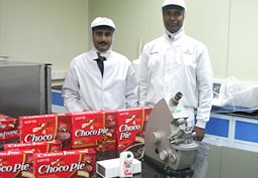
Mr. Ramkumar and Mr. Ravi Shankar
The two factories located in the cities of Chennai and Nellikuppam in the State of Tamil Nadu manufacture gums and candies.
We visited the Chennai factory that just started producing the "Choco Pie," a very popular Korean treat similar to the Oreo and Moon Pie cookies, in 2010.
The facility is very big with an extensive lawn that provides an open feel.
Mr. Ramkumar and Mr. Ravi Shankar gave us a tour. They visited Lotte of Korea many times to learn about the production. Their favorite Korean food is bibimbap.
QWhat are you measuring with the refractometers?
AWe are measuring the concentrations of glucose and sorbitol used in the "Choco Pie."
QWhich models of refractometers are you using?
AWe are using the NAR-3T, PALs, and MASTERs in the QC lab.
We are also using several hand-helds for batch testing at the production line.
ATAGO is honored to be part of Lotte's efforts to be "Asia No. 1 Confectionery Company."
A gelatin-free version of the "Choco Pie" was developed for the Indian market with a large vegetarian population. The green circle in a square indicates that the product is vegetarian-safe.
Thank you for accepting our visit at such a busy time of the year, before Diwali, and also for the "Choco Pie" souvenir. We enjoyed it!
We are looking forward to Lotte's first TV commercial in India. It is exciting news.
We appreciate your continued support of ATAGO refractometers.
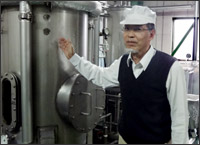
Mr. Yasuda, Production Manager and Chief Brewer
Located in Kagoshima prefecture, Kokubu Shuzou Cooperative Partnership is the originator of "imo koji" shochu.
In 1988, they first created imo shochu made by 100% imo (sweet potatoes), called "Imo Koji Imo"; previously imo shochu was made with rice malt rather than potato malt. They are a pioneer manufacturer of shochu that really features the flavor of sweet potato.
The company started out 25 years ago as a partnership of several small local breweries. They are located in a mountainous area in Kokubu, about a 10-minute drive from the city center.
They judge the concentration of unrefined sake using Brix %. We interviewed Mr. Yasuda, Production Manager and Chief Brewer, who gave us a step-by-step guide of imo shochu production.
Imo Shochu is finally completed after such a scrupulous process. "Imo Koji Imo" is a stately representation of imo shochu. "Imo Koji Imo" is a stately representation of imo shochu. People who like imo shochu should definitely try this product out.
◆Imo Shochu: Imo Koji Imo
Made with 100% sweet potatoes. Epitome of imo shochu.
◆Imo Shochu: Tsurunashi Gendi(※)
Made with 100 year old "Tsurunashi Genji" and local rice "Yume Toiro." Has a sweet hint of imo.
※Imo Shochu "Tsurunashi Genji" uses rice malt as well.
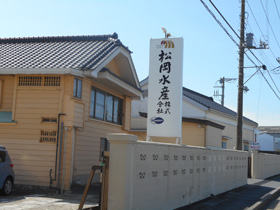
Matsuoka Suisan Co., Ltd. is a fishery company based in Choshi, which is famous as the best fishing port in Japan. They founded in the Meiji era more than 100 years ago.
The main products are smoked salmon, salted fish, boiled fish, etc.
For smile care foods proposed by the Ministry of Agriculture, Forestry and Fisheries, and for universal design foods of the Japan Nursing Care Food Association, we also manufacture grilled fish that are easy to eat and chew even for the elderly and people with dysphagia.
We have been using ATAGO's MASTER-S10α for a long time to check the salt concentration of the pickling solution when making salted salmon and mackerel. If the concentration of the pickling liquid changes, it will affect the taste of the product, so MASTER-S10α is indispensable for quality control.
Matsuoka Suisan has a long history and is seriously working on developing easy-to-eat products. Fashionable cooking recipes using products are also introduced on the website. Please take a look.
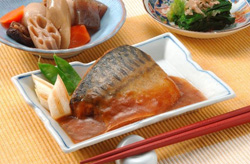
"Long-established taste" mackerel miso boiled
We look forward to your continued patronage.
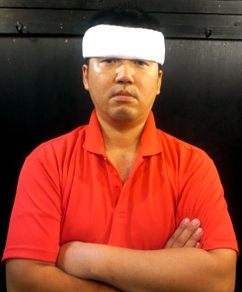
Mr. Kazuhiro Terada
Ramen-loving CEO Mr. Kazuhiro Terada owns and runs ramen shops in Abiko city and Mito city. Since "Kannana" is a nickname for a highway, people may wonder why a restaurant in Abiko (unrelated to the highway) might be named "Kannana Ramen." This store has a history of apprenticeship with a famous ramen shop by Kannana called "Tosakko Ramen"; the name is symbolic of this tutelage.
Mr. Terada began using Brix meters once he started to manage multiple locations.
We first met Mr. Terada when he contacted us saying that "the readings on the demo unit are inconsistent."
"Teraccho" ramen is characterized by their extra-thick broth made with plenty of pork backfat.
The "extra-thickness" of their signature broth became a problem when trying to use it on a refractometer; sample was so murky that it didn't generate a clear reading.
Because Brix meters are based on light refraction, extra-thick broth would only show fuzzy boundary lines, resulting in instable readings.
Mr. Terada demoed several different models to no avail, but he did not give up. When he asked us if we had any other models that might work, we suggested "Rice Moisture Checker G-50," granted that we've never tried this model for such application. This unit is typically used to measure Brix% of rice and converts the reading to rice moisture level, so it generally gives a stable reading for white, murky samples. The "G-50" model successfully showed consistent readings for Mr. Terada's broth, and he implemented the unit for his stores.
We interviewed Mr. Hideyuki Kato from Abiko Location.
QWhy do you use Brix meters?
AWe didn't really need it when it was just one location, but when we branched out to multiple locations, it became necessary. It is difficult to train others to recreate the same taste.
QHow many people are in charge of making the broth?
AAt our Abiko store, about 7 to 8 people. Even when I'm not at the store, they can call me and describe the color and the Brix level, and I can give them directions. When I'm in charge of the broth myself, I've began to be able to guess its Brix range. I believe this is possible because being conscious of the Brix scale gave me a reference point for consistency.
QAt what stage do you take measurements?
AWe measure the Brix at the final stage of boiling down the broth. We get it to about 10-11% and freeze it, and the next day we add it to the broth from the day before. We also take measurements when there is a high possibility of fluctuation, such as when we open, when a staff ends his/her shifts, or when we use a broth prepared on a different day.
QWhat do you find important in running a ramen shop?
AFlavors change with even the smallest factors. Each of our branch stores has their own signature taste.
No two ingredients are the same, and surrounding temperature and humidity change each day, so it is very challenging to keep recreating the same taste, even within the same branch store. That is why we keep trying hard all the more.
We also have variety of choices of noodle firmness, amount of fat, and flavor intensity to satisfy each customer's preference.
Ramen with generous amount of pork fat. Their signature Char Siu is so big that it protrudes from the bowl. For the first bowl they serve thick noodles, and skinny noodles are served for seconds.
The taste is addictive and unforgettable!
We really enjoyed their specialty ramen. They clearly are very passionate about the quality of their products, and we hope that everyone will have a chance to visit them.
The taste of Tosakko ramen was something unique to that store. Because it is impossible to recreate their flavor, we came up with a unique one of our own. Mito store specializes in miso ramen, considering the trend in the neighborhood. Our neighborhood of the Abiko store is a high-competition area for restaurants, with many popular franchise restaurants as well as numerous ramen shops. If we are to be successful in multiple locations, we need to make each one the most popular one in the neighborhood. Brix meters are essential to maintain our flavor.
【Abiko Location】Rich Pork Fat" Kannana Ramen Teraccho
【Mito Store】Edo Miso Ramen Teraccho II